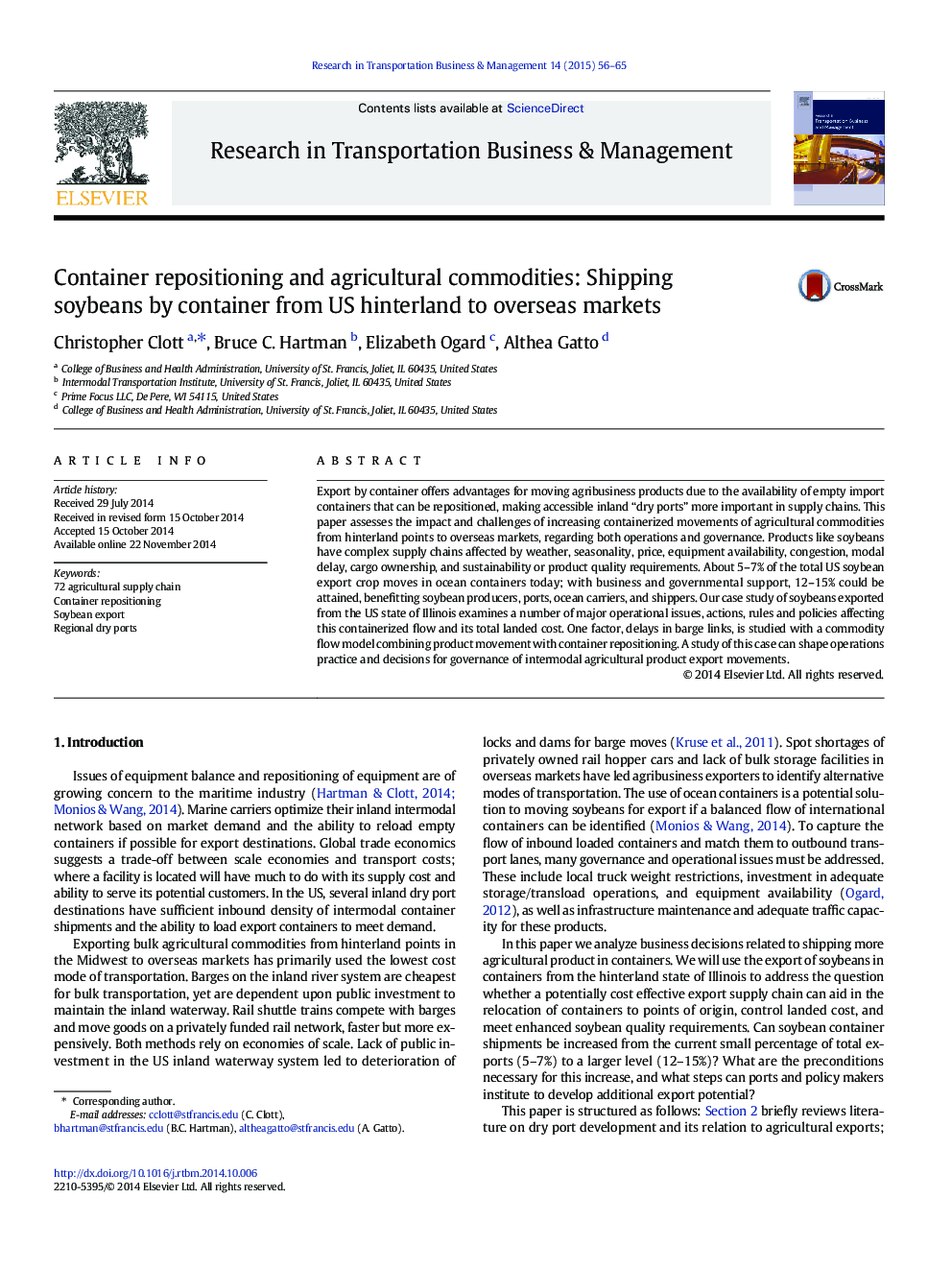| Article ID | Journal | Published Year | Pages | File Type |
|---|---|---|---|---|
| 7410416 | Research in Transportation Business & Management | 2015 | 10 Pages |
Abstract
Export by container offers advantages for moving agribusiness products due to the availability of empty import containers that can be repositioned, making accessible inland “dry ports” more important in supply chains. This paper assesses the impact and challenges of increasing containerized movements of agricultural commodities from hinterland points to overseas markets, regarding both operations and governance. Products like soybeans have complex supply chains affected by weather, seasonality, price, equipment availability, congestion, modal delay, cargo ownership, and sustainability or product quality requirements. About 5-7% of the total US soybean export crop moves in ocean containers today; with business and governmental support, 12-15% could be attained, benefitting soybean producers, ports, ocean carriers, and shippers. Our case study of soybeans exported from the US state of Illinois examines a number of major operational issues, actions, rules and policies affecting this containerized flow and its total landed cost. One factor, delays in barge links, is studied with a commodity flow model combining product movement with container repositioning. A study of this case can shape operations practice and decisions for governance of intermodal agricultural product export movements.
Keywords
Related Topics
Social Sciences and Humanities
Business, Management and Accounting
Business and International Management
Authors
Christopher Clott, Bruce C. Hartman, Elizabeth Ogard, Althea Gatto,
